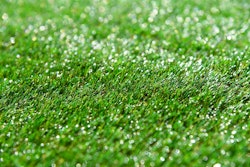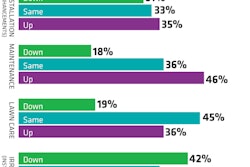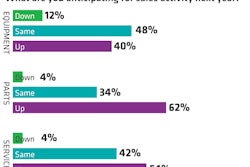The Professional Landcare Network says it marked a Green Industry victory when the Environmental Protection Agency issued a Notice of Intent to remove the 40% turfgrass restriction from the WaterSense program’s landscape specifications for new homes. The same requirement was removed from the International Green Construction Code by a 2/3 vote of the International Code Council at the group’s final action hearings in Phoenix recently.
However, Allan Bilka, senior staff architect for the International Code Council, says that while the section on turfgrass has been deleted from the International Green Construction Code, it has been replaced by a section on native plant landscaping. “This new provision now requires that at least 75% of the newly landscape area be planted with native species,” Bilka points out. “As you can imagine, this may have some similar impact as the 40% turfgrass limitation that was just removed.”
Bilka says it will require significant landscaping expertise to determine how much turfgrass can be used in order to meet the requirement for 75% native species. For example, certain types of native turfgrass species could be used in certain regions.
Background on the turfgrass limitation push
In 2009, the EPA introduced the WaterSense landscape restriction requiring that only 40% of a new home’s landscape consist of turfgrass, regardless of varying regional climates or whether the site had access to sources of reusable water, such as recycled stormwater. In 2010, the requirement was proposed by the EPA as part of the International Green Construction Code that many local governments use to form their requirements for new commercial buildings. Going forward, the only requirement for EPA WaterSense-labeled landscapes will be adherence to the EPA’s water budget tool.
“It is well documented that turfgrass produces sound environmental benefits,” stated Tom Delaney, director of government affairs for PLANET. “I’m glad that after a three-year effort, Green Industry professionals and the EPA were able to come to an agreement. I’d like to thank the many groups that worked with legislators on Capitol Hill and with EPA officials to achieve this success.” The issue was also part of PLANET’s Legislative Day on the Hill this past July when PLANET members met with congressional leaders to explain the significance of the proposal.
Discussing the EPA’s water budget tool, which is used to determine the regional suitability of landscapes, Delaney said, “The EPA’s water budget tool continues to be an issue. PLANET will work with other industry groups to help in the ongoing development of water use tools and guides for lawn care and landscape professionals.”
PLANET is the association of members who create and maintain the quality of life in communities across America. With approximately 3,700 member companies and affiliates, these firms and their employees represent more than 100,000 green industry professionals. Some of these professionals have taken the extra step of becoming certified through PLANET and bear the distinction of being known as Landscape Industry Certified.

![Doosan Bobcat Wacker Neuson Stack 2ec Js Pb V6e[1]](https://img.greenindustrypros.com/mindful/acbm/workspaces/default/uploads/2025/12/doosan-bobcat-wacker-neuson-stack2ecjspbv6e1.CPyyz8ubHn.png?auto=format%2Ccompress&bg=fff&fill-color=fff&fit=fill&h=100&q=70&w=100)








![Doosan Bobcat Wacker Neuson Stack 2ec Js Pb V6e[1]](https://img.greenindustrypros.com/mindful/acbm/workspaces/default/uploads/2025/12/doosan-bobcat-wacker-neuson-stack2ecjspbv6e1.CPyyz8ubHn.png?ar=16%3A9&auto=format%2Ccompress&bg=fff&fill-color=fff&fit=fill&h=135&q=70&w=240)








